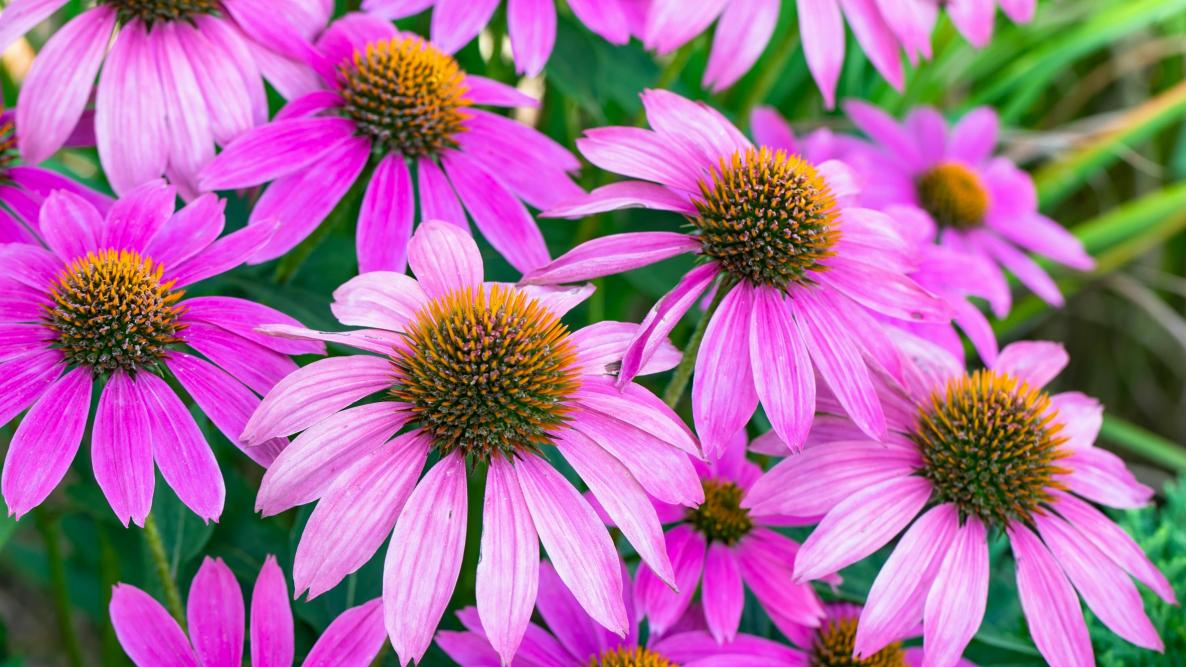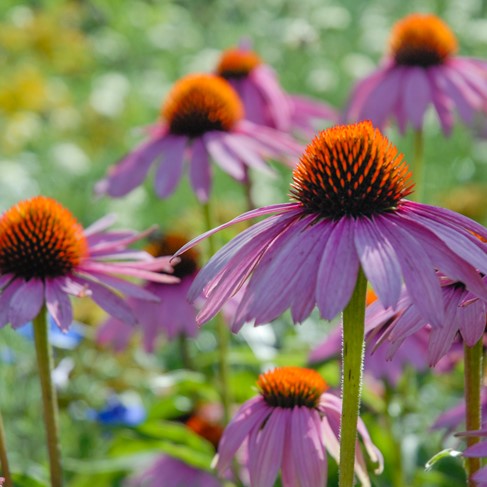Purple Coneflower
E. purpurea
Coneflowers, also known as echinacea, are one of America’s native wildflowers, beloved by butterflies, bees, and songbirds. Learn more about growing coneflower care—from planting to pests to deadheading.
Echinacea are tough perennials in the daisy family (Asteraceae) and hardy in Zones 3 to 9. They are native to the eastern and central United States, blooming in mid-summer and continue to flower sporadically until frost.
The genus is named after the Greek word for hedgehog, echinos, because of the cone-like center which attracts butterflies and bees. Leave the seed heads after bloom and you’ll also attract songbirds such as goldfinches!
Of course, this plant is good for us humans, too, with many medicinal properties; today, it’s especially popular as an herbal tea to strengthen the immune system.
This is not an aggressive plant, but it will naturally self-seed and spread, which you can encourage if you wait to cut back until late winter (or prohibit self-seeding if you deadhead the flowers right after they fade). Hybrids will not self-sow; most are sterile (they do not produce viable seeds). Hybrids aren’t of much interest to birds, either.
The purple coneflower (E. purpurea) is the most common and readily available. The flowers measure 2 to 4 inches in diameter with a mounded, brown, central cone of disk flowers, surrounded by long light purple rays that droop down its center cone. But also up to nine naturally occurring echinacea can be found in purple shades or yellow (E. paradoxa). They have dark green lower leaves 4 to 8 inches long.
Echinacea are tough perennials in the daisy family (Asteraceae) and hardy in Zones 3 to 9. They are native to the eastern and central United States, blooming in mid-summer and continue to flower sporadically until frost.
The genus is named after the Greek word for hedgehog, echinos, because of the cone-like center which attracts butterflies and bees. Leave the seed heads after bloom and you’ll also attract songbirds such as goldfinches!
Of course, this plant is good for us humans, too, with many medicinal properties; today, it’s especially popular as an herbal tea to strengthen the immune system.
This is not an aggressive plant, but it will naturally self-seed and spread, which you can encourage if you wait to cut back until late winter (or prohibit self-seeding if you deadhead the flowers right after they fade). Hybrids will not self-sow; most are sterile (they do not produce viable seeds). Hybrids aren’t of much interest to birds, either.
The purple coneflower (E. purpurea) is the most common and readily available. The flowers measure 2 to 4 inches in diameter with a mounded, brown, central cone of disk flowers, surrounded by long light purple rays that droop down its center cone. But also up to nine naturally occurring echinacea can be found in purple shades or yellow (E. paradoxa). They have dark green lower leaves 4 to 8 inches long.

